A tripod is an essential part of every shutterbug’s gear. It is used by every type of photographer, hobbyist, or professional, no matter what they specialize in. When you start looking out for a tripod, you’ll notice that there are thousands of tripods available from different brands and different price points. Which brings us to the topic of this post—are camera tripods universal?
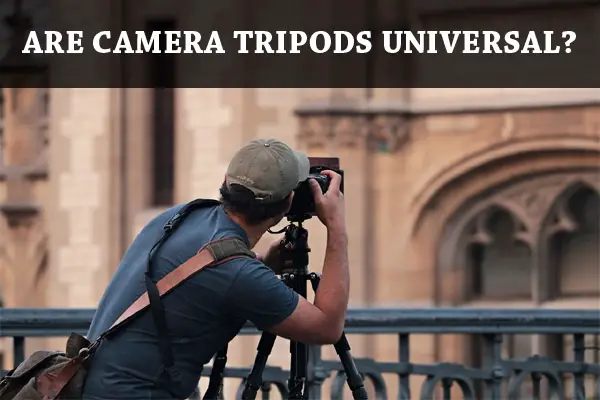
The short answer is yes; camera tripods are universal. But, it is a bit more complicated than that, and you might want to read the complete article before you head out and buy one for your camera.
What Makes Camera Tripods Universal?
Almost all modern tripods have a 1/4 inch thread on which you would mount a camera. Almost all consumer and prosumer cameras also have a 1/4 inch female thread, which technically means that all cameras can be mounted on all tripods.
But, just because a camera can be mounted on a tripod does not mean that the tripod will perform as designed. There are several other factors that need to be considered before making a purchasing decision.
Camera Tripods are made for a specific Use Case
Unless you include entry-level tripods, all tripods are made for specific use cases. A tripod that is created for video making will be vastly different than one created just for photography.
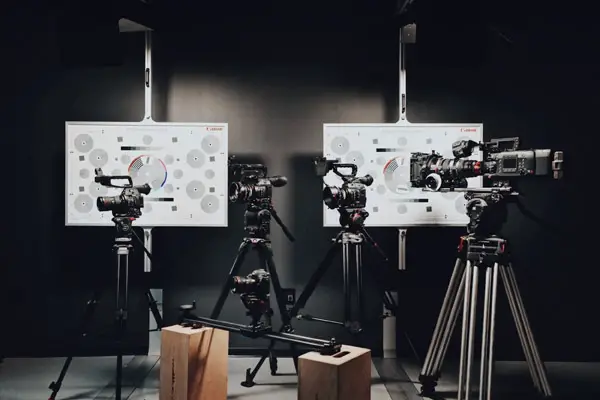
This does not mean that you’ll need a different tripod if you do different types of photography, but it does mean that you should have a reasonable idea about how you’re going to use your tripod, and more importantly, what factors you should consider before you buy one. So, what are those factors?
Factors You Should Consider Before Buying a Tripod
Maximum Height
The easiest way to get a backache is to buy a tripod that is too short. I’ve made that mistake myself. When you’re taking pictures, your camera is mostly at eye-level. That is where you can see the viewfinder and comfortably adjust the settings if needed. That is the ideal height of a tripod as well.
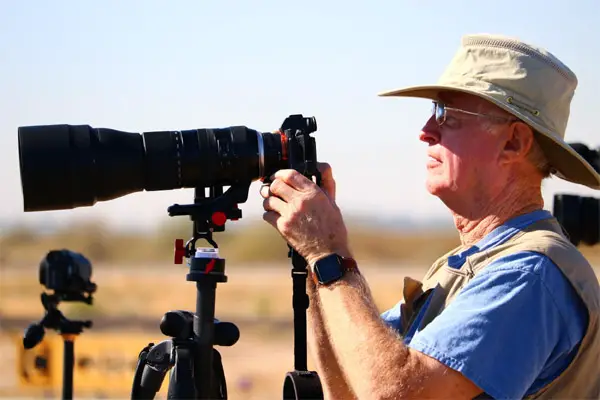
At maximum height, your tripod should be extended enough so that the camera reaches your eye level. If you’re purchasing only the legs, then they should at least reach your shoulders. If it reaches your jaw, that’s even better.
Payload (Or Max Weight)
Every tripod has a maximum assigned payload, which is the maximum weight it can handle while keeping stable — knowing this crucial, as you run the risk of damaging your precious equipment if your tripod cannot support its weight.
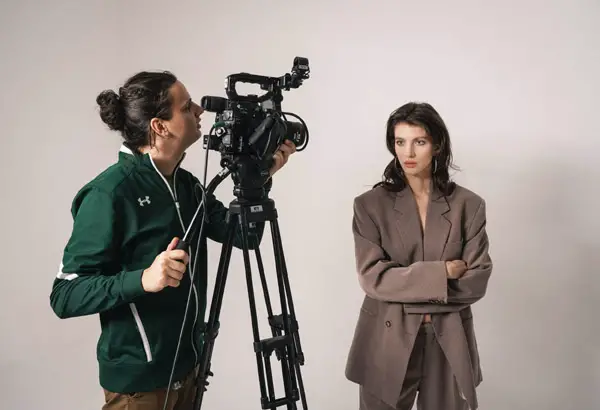
Make sure that your tripod can support your rig (including accessories) comfortably, leaving some room for extra weight. Also, consider the weight of your current and future lenses, as they will make up a majority of the weight of the setup.
Another thing to remember is that the legs and the head, both have to support the weight. So, if you’re purchasing the legs and the head separately, make sure that they both individually support the payload.
Build and Type
The build includes the material types, the weight of the tripod, and the actual build quality—all of which will affect how you will use your tripod.
First, consider the weight. Having a heavy tripod is great for stability, but bad for mobility. The materials used for construction will heavily affect the overall weight, and you will have to find the right balance between stability and weight.
Stability
A tripod’s primary job is to keep your camera stable, so obviously, you need to ensure that the tripod you choose is stable in all the conditions you shoot in. A good tripod should handle bumps, vibrations, and light knocks without any problems.
When testing for stability, you should also consider all the different positions you’ll place the tripod in. Make sure the head and the legs are stable in a variety of shooting positions. You should also know that a heavy tripod does not always mean a more stable tripod. In most cases, a heavier tripod will be more stable, but there are exceptions.
Reliability
A better-built tripod may be expensive, but it is going to be reliable for a long time. A cheap tripod, on the other hand, will not. A well-maintained tripod can easily last a decade and will be a better deal than buying many cheap tripods over that time. However, there is some value in purchasing cheaper tripods, as they can allow to understand which features you value in a tripod.
Head Features
The head is where you will mount your camera, and similar to the other things I’ve talked about, you’ll need to consider your needs first. Depending on the type of photographs you’ll take, you might need a head that supports vertical mode, a quick-release function, pan or tilt features, or more. You should also consider the max weight limit that the head will support, which I already mentioned.
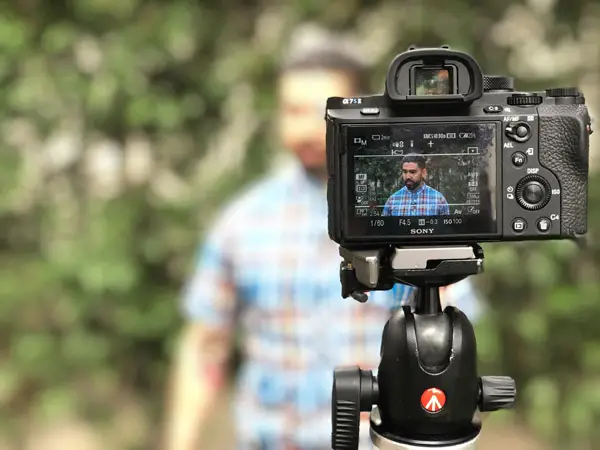
While most modern cameras will also have a level function built-in, you should not ignore having a bubble level in the head you purchase. It will help you level your camera quickly, without fiddling around in your camera’s settings.
Feet Features
The tripod’s feet are often ignored, but they are also very important to consider as they are the sole point of contact with the ground.
Most tripods come with rubber feet, while some might have plastic feet. Tripods built for outdoor use will also have metal spikes that can dig into the ground for a better grip.
Some tripods will come with a mix of 2 types of feet. For example, the feet might have rubber tips, but upon twisting them, they will reveal metal spikes. Tripods with these type of feet will obviously be a little more versatile than others.
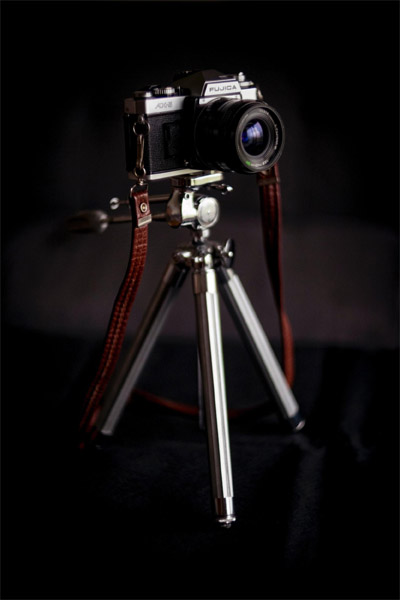
Other Niche Features
Nowadays, you’d find some tripods with some interesting features that might be useful for certain situations. It is worthwhile to know that these features exist before you can think of getting a tripod has them.
For example, some tripods’ legs’ can spread wide, allowing the head to be close to the ground. Some tripods can be maneuvered to have the camera perfectly parallel to the ground—which is great for flat-lay photography.
Some tripods, like this one, also feature a built-in monopod, which can be useful for a bunch of other use cases.
There are plenty of similar features that can make a tripod much more useful than it already is.
Speciality Tripods
Apart from the tripods that we already discussed, there are few kinds of tripods that can’t be categorized into a single category. They serve a different purpose, but they can also be used by serious photographers in some cases. Here are some of those tripods.
Flexible Tripods
Also called “GorrilaPods”, these tripods have flexible legs that can be bent and twisted to achieve complex shapes. This offers many advantages. Not only are these tripods small and easy to carry, but they can also be used to place the camera in places that would not be possible with traditional tripods; like a tree branch, a meta rail, etc.
These tripods are commonly used by vloggers and casual photographers, who value the flexibility and small form factor over stability.
Mini Tripods
Mini Tripods are also popular amongst casual photographers and vloggers, with the Manfrotto Pixi Mini being the most popular. Because of their small size, they are easy to travel with, and also great to use at family gatherings where you just need something to hold the camera steady.
User Experience
Arguably, the user experience of using a tripod should be on the top of the list of priorities. You could have the perfect tripod feature-wise, but if the experience of using it isn’t great, it’s going to end up on the shelf, collecting dust. No matter which tripod you decide to buy, spend some time with it and get familiar with it. Only when you enjoy using the tripod should you consider purchasing it.
What Tripod Should You Buy?
If you’re about to purchase your first tripod, then you should definitely buy a decent, cheap tripod instead of trying to find the best tripod that would fit your needs.
That is because unless you’ve been practicing your craft for a while, you’d want to explore different types of photography. Even if you don’t, then finding out the limitations of a cheap tripod is a great way to know what you prefer in a tripod. And, once you know that, it will be easy to find a tripod that checks all the boxes, hopefully.
Conclusion
Hopefully, you now understand that camera tripods are universal, but that does not matter. What does matter is that you understand your needs as a photographer and find the tripod that fits those needs. There are plenty of factors to consider, but it ultimately boils down to what and how you prefer to shoot.
Check out this link to learn tricks to steady your shots without a tripod.









1 comment